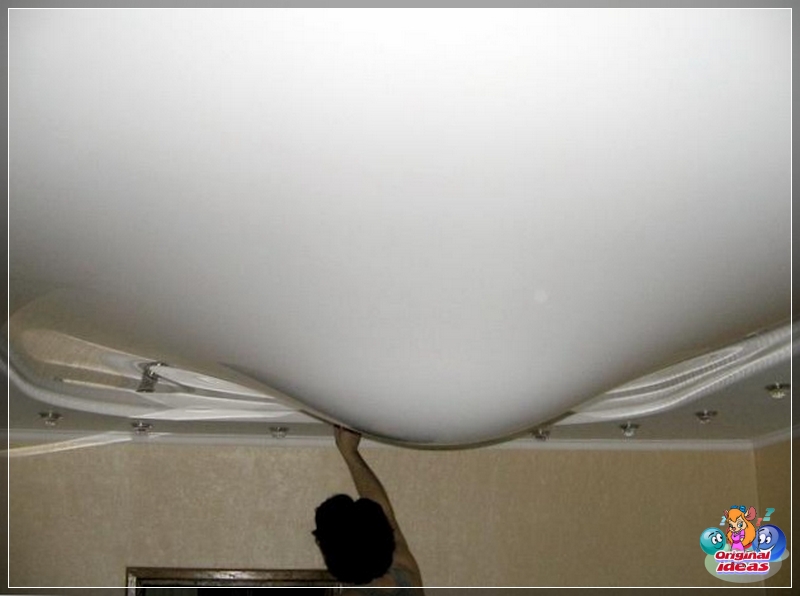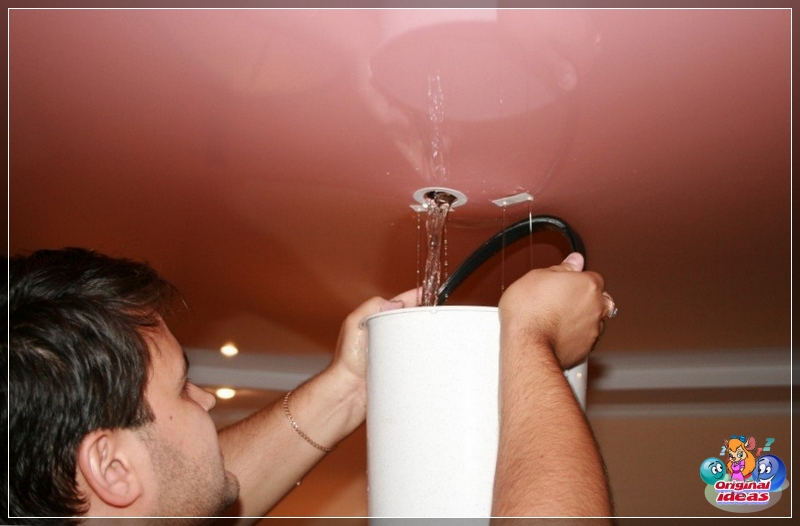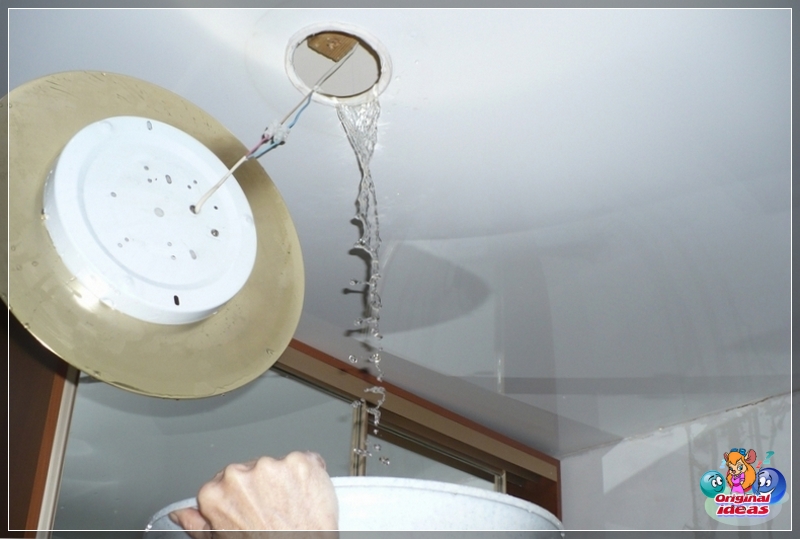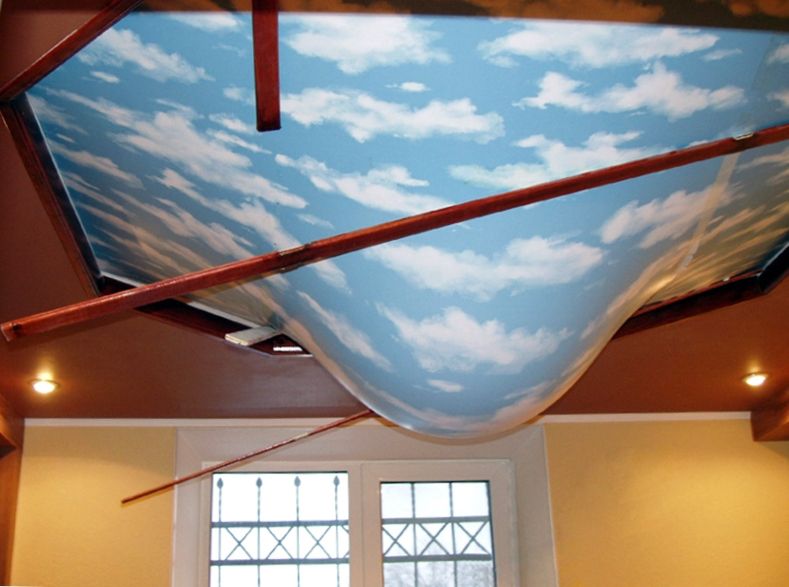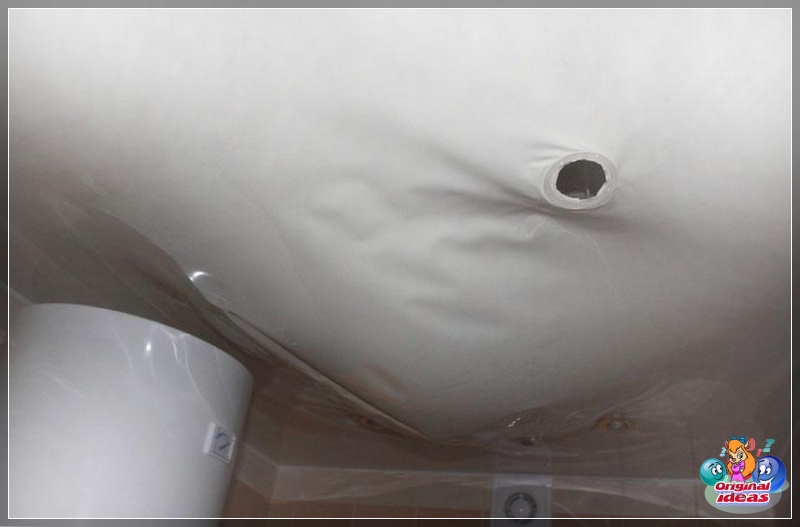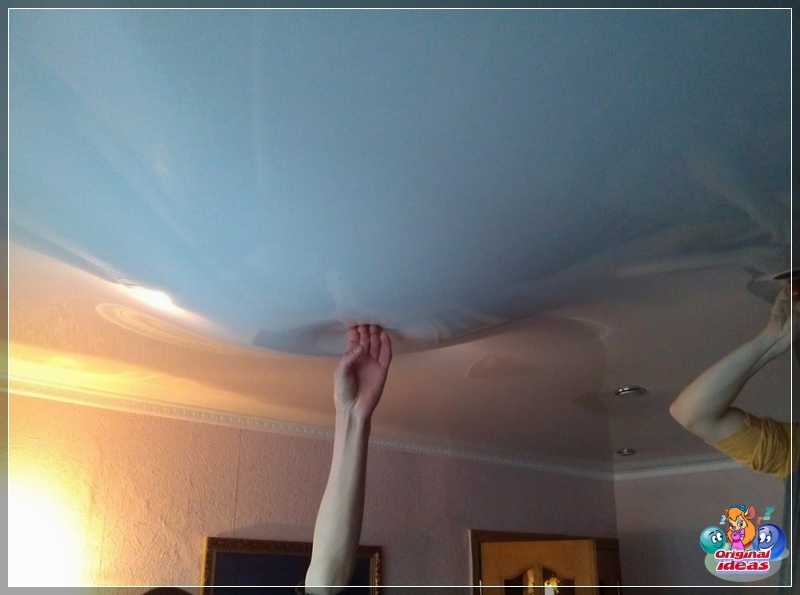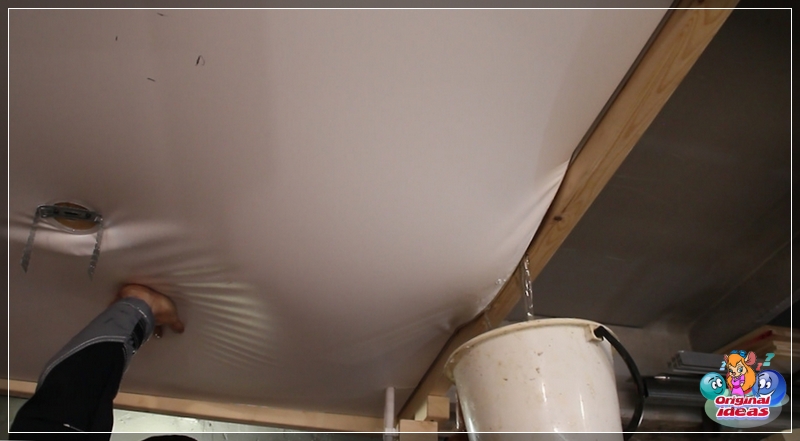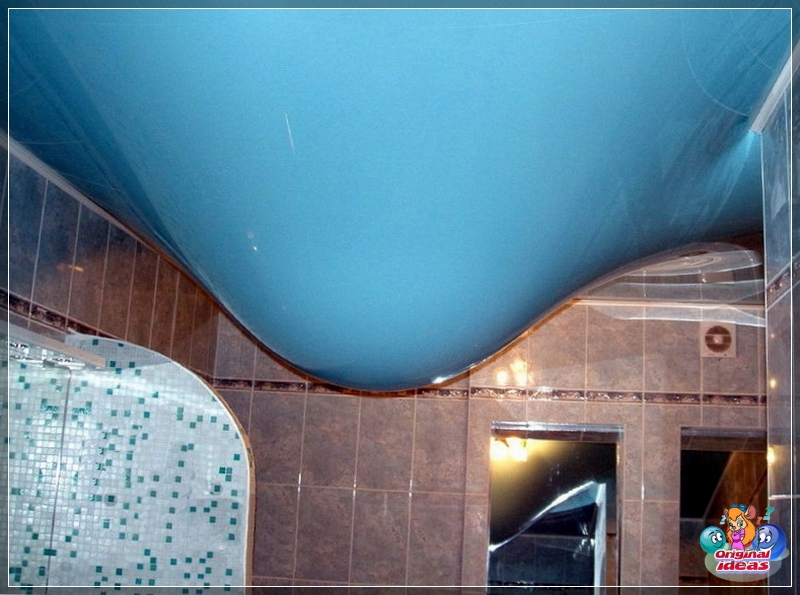
Many homeowners are changing the interior of their rooms using such a modern finishing material as a stretch ceiling. It has advantages, including aesthetics, ease of installation and ease of maintenance. But there is a problem - the flooding of premises from above is more familiar to residents of apartment buildings, and some of them have to drain the water from the stretch ceiling, which has leaked through the ceiling. An unpleasant but necessary procedure must be carried out in order to avoid a breakthrough, fall of the canvas, water ingress on walls, furniture, electrical wiring, etc.d.
How does water act on a stretch ceiling
There are 2 types of stretch ceilings. One of these is woven fabrics made from polyester. The material is porous, so water does not accumulate on it. In a sense, this can be considered an advantage of the material (i.e.To. leakage is detected almost immediately), but only if the volume of incoming water is small. If a large mass of water gets in, the fabric ceiling, deprived of its ability to stretch, may tear or break off from the attachment points.
Polyvinyl chloride cloth is much more elastic than woven material and can withstand much more stress. PVC ceiling, as a rule, does not burst, does not fall off the baguette, but deforms. The bulges are created by the accumulated liquid on the canvas. Bubbles filled with water can form in the middle of the ceiling or between the fixtures installed in it.
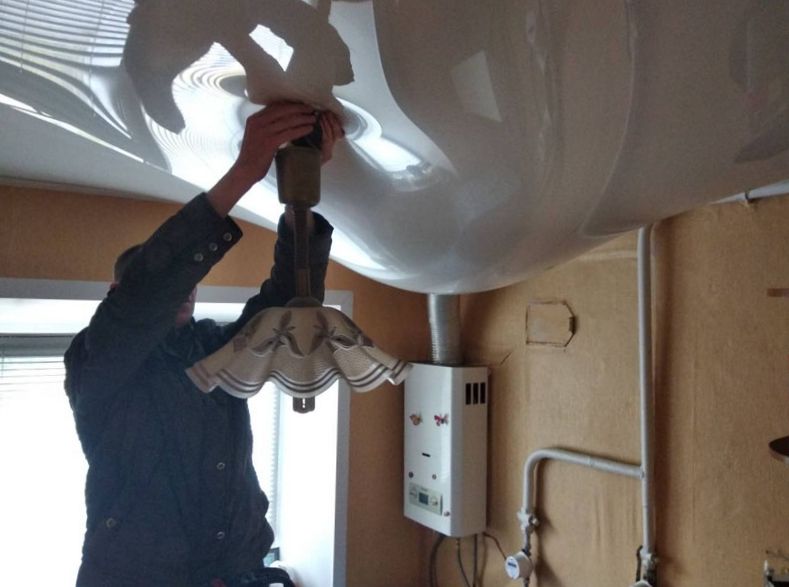
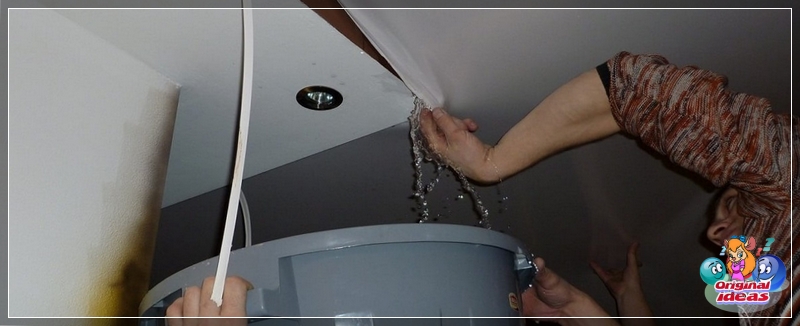
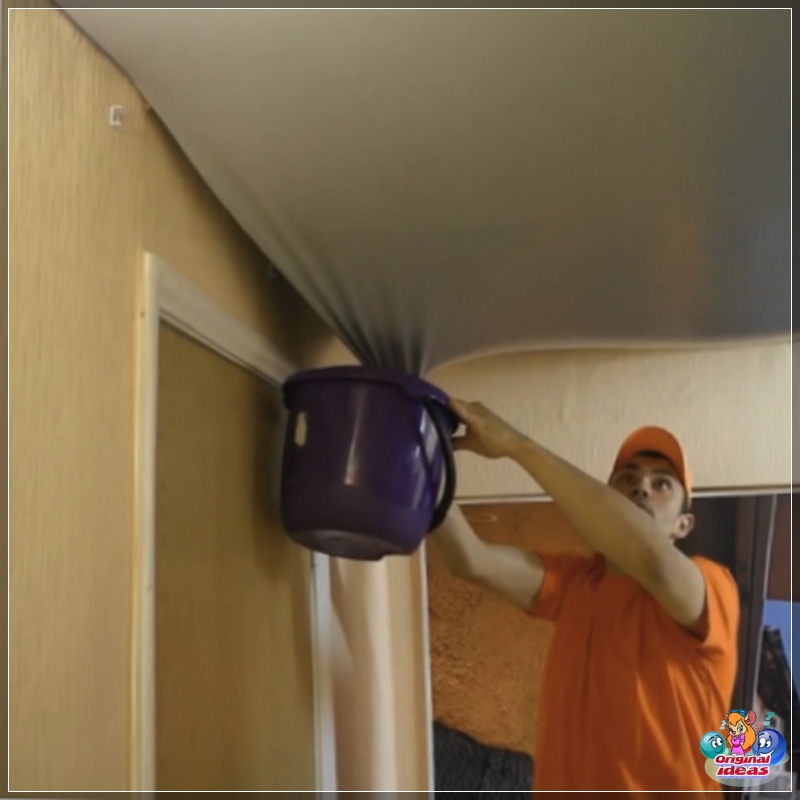
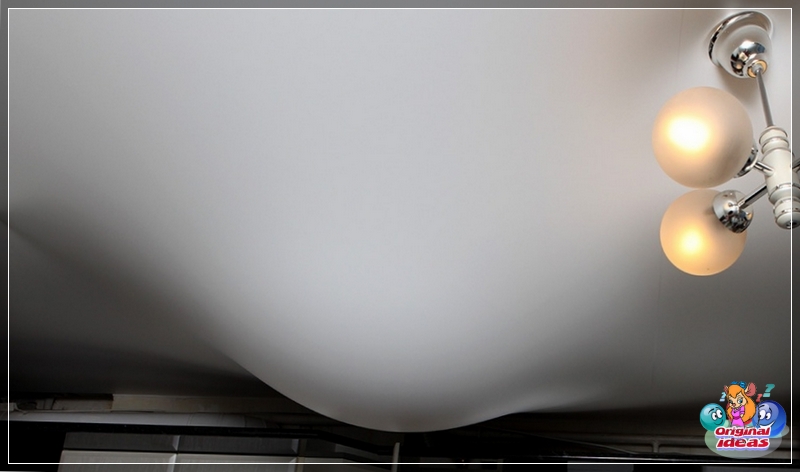
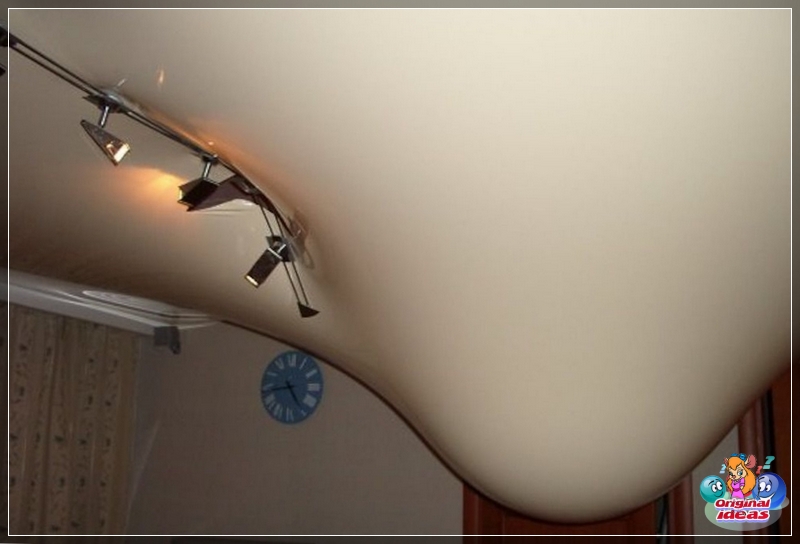
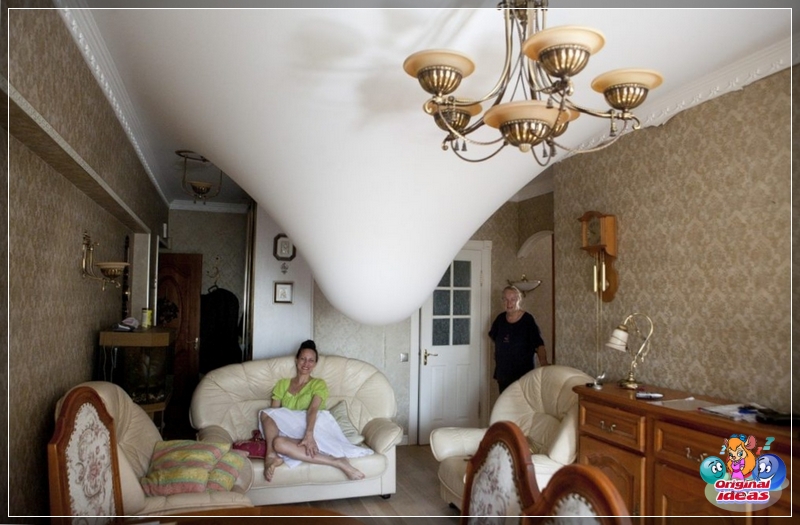
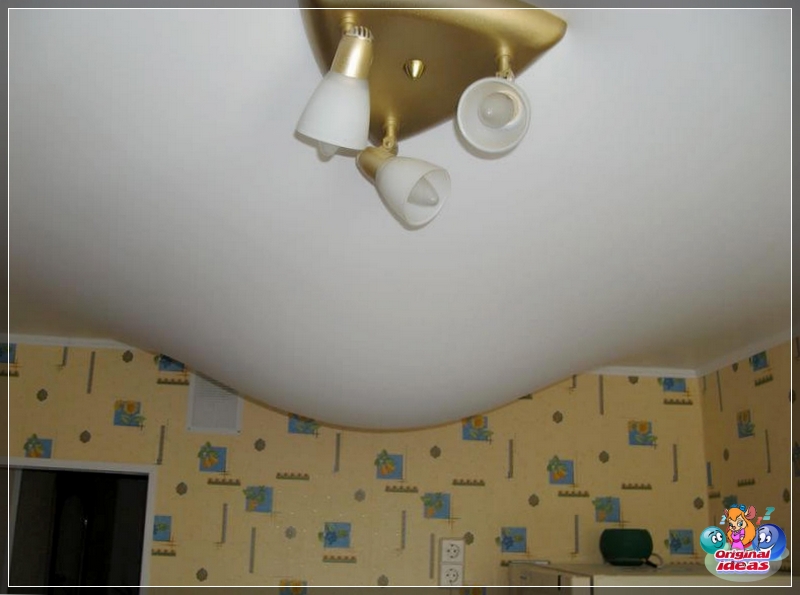
PVC material to some extent protects the space underneath from the ingress of water (the strength indicators of the canvas fluctuate around 100 l / m2), but only if its temperature is not higher than 500C. After removing the water from the stretch web, its surface returns to its normal configuration. But the PVC film does not withstand prolonged contact with hot liquid. Contact with waste water is contraindicated for the canvas. After a breakthrough in the sewer system, the ceiling will have to be changed.
What measures need to be taken
The procedure for water ingress on the ceiling is as follows:
As for calling the masters to remove water from the ceiling, often the speed of their arrival leaves much to be desired, and the condition of the film requires that measures to release it from liquid be taken immediately.
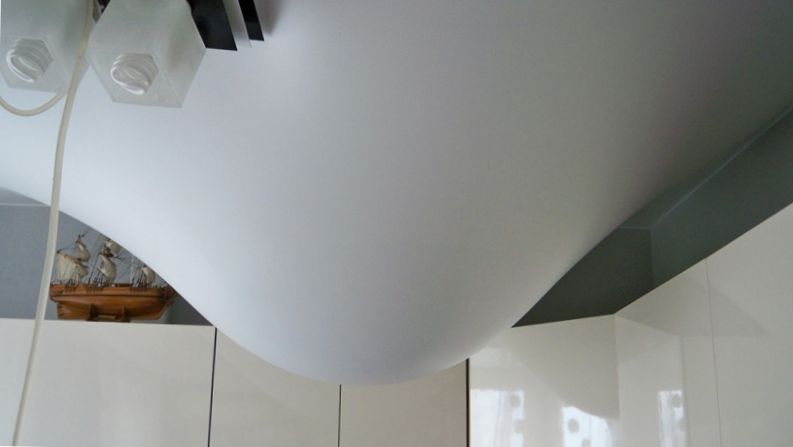
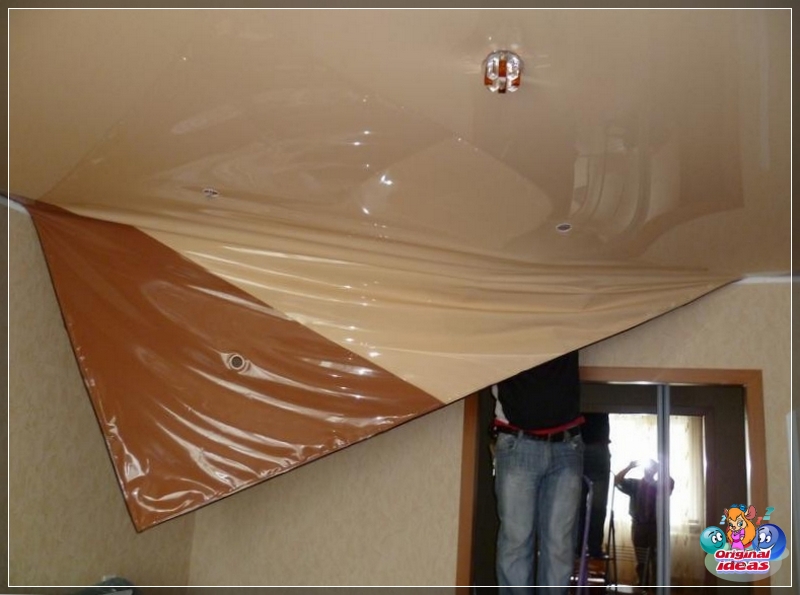
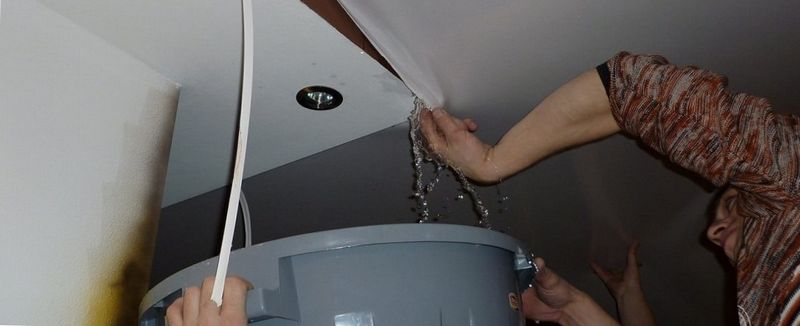
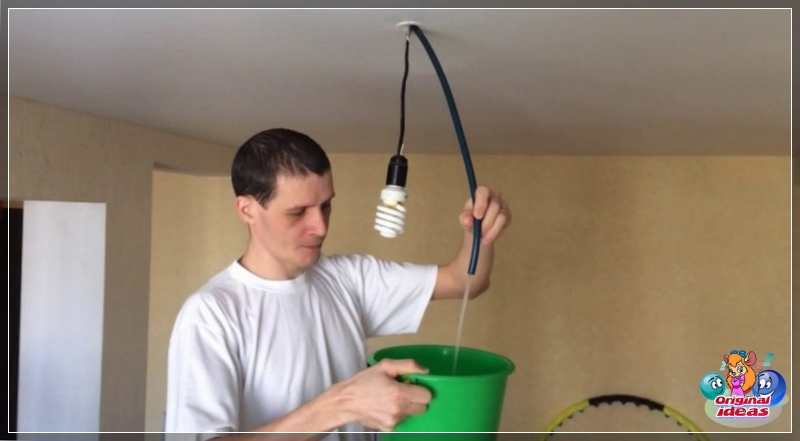
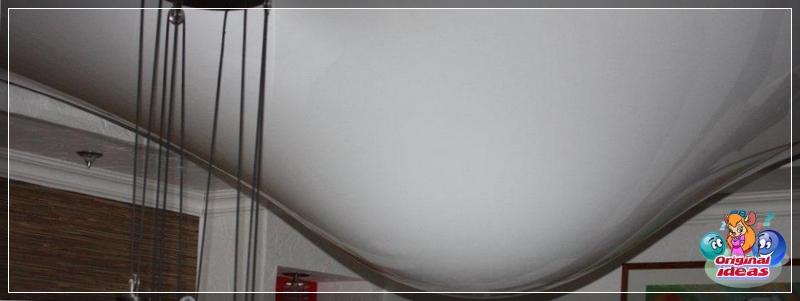
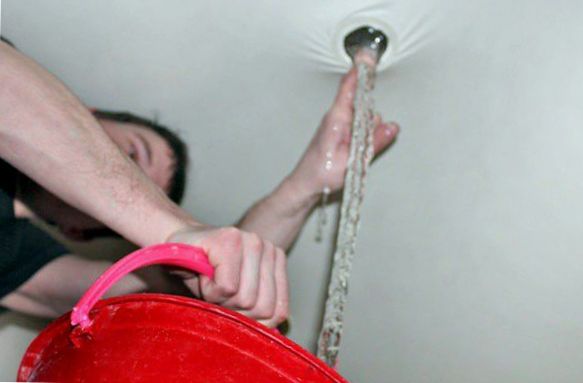
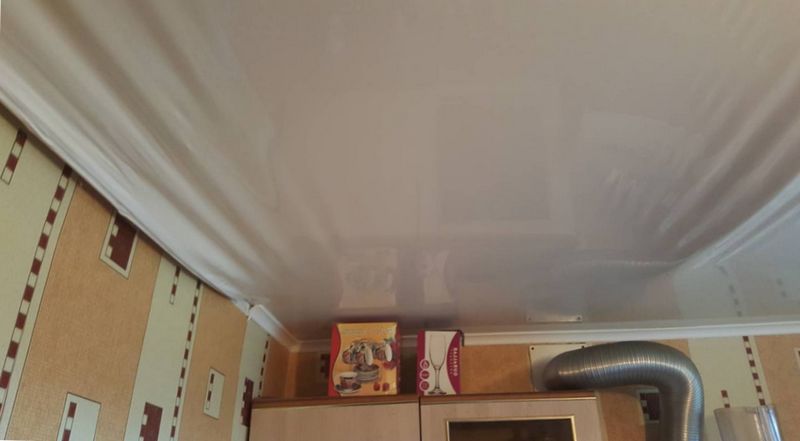
The work can be done independently, without the involvement of specialists, but you need to invite at least one assistant and prepare means to facilitate the process of draining. You will need:
Methods for freeing a stretch ceiling from water
There are 2 ways to drain water from a stretch ceiling. It is collected in a container through the hole for the lamp closest to the accumulation of liquid or drained through the corner of the canvas. The first method is acceptable when a water bubble is near the lamp, and with a large mass of leaked liquid. The second method requires dismantling part of the tensioning system.
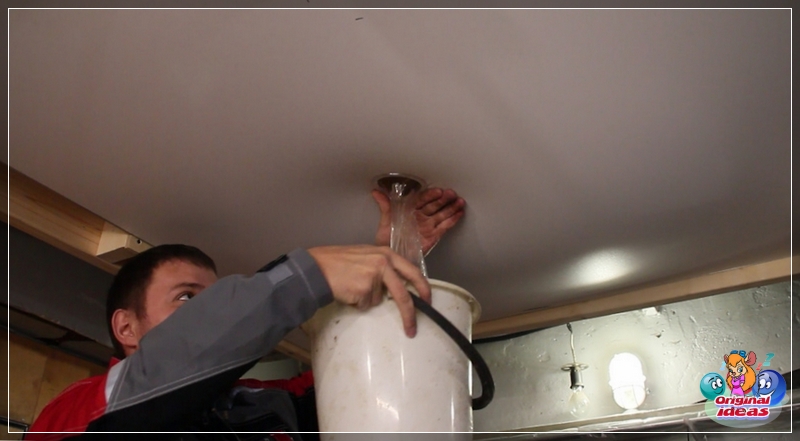
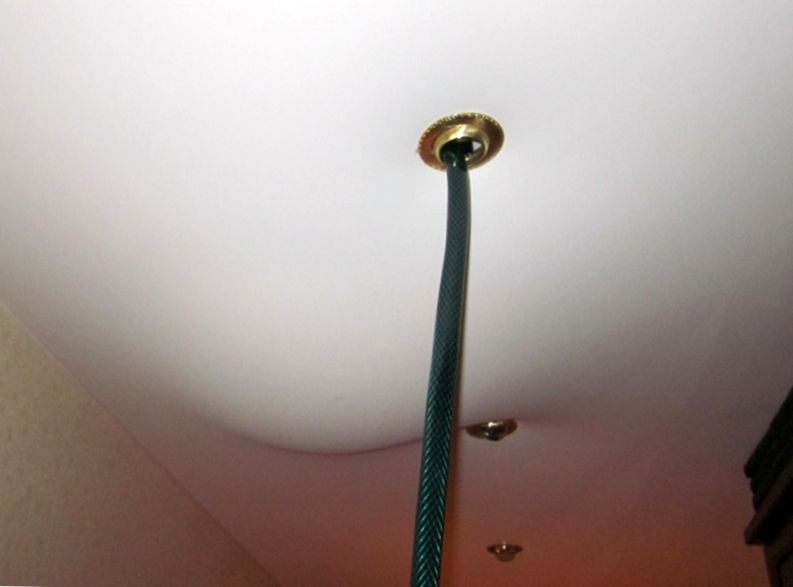
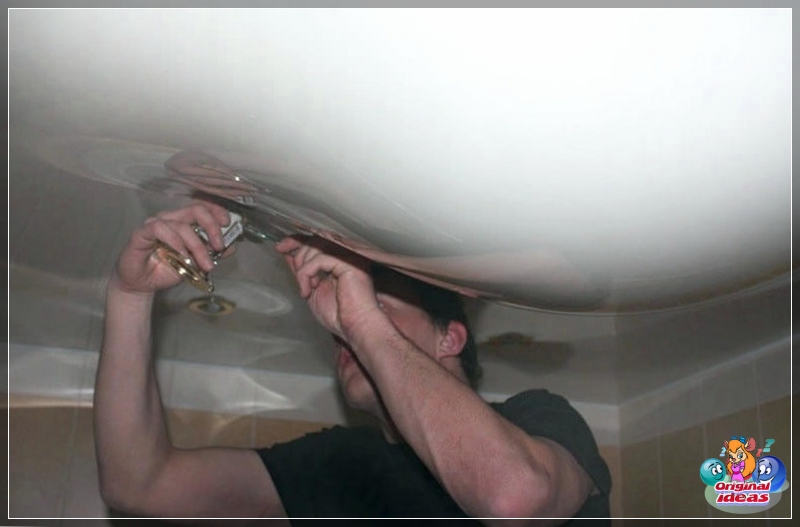
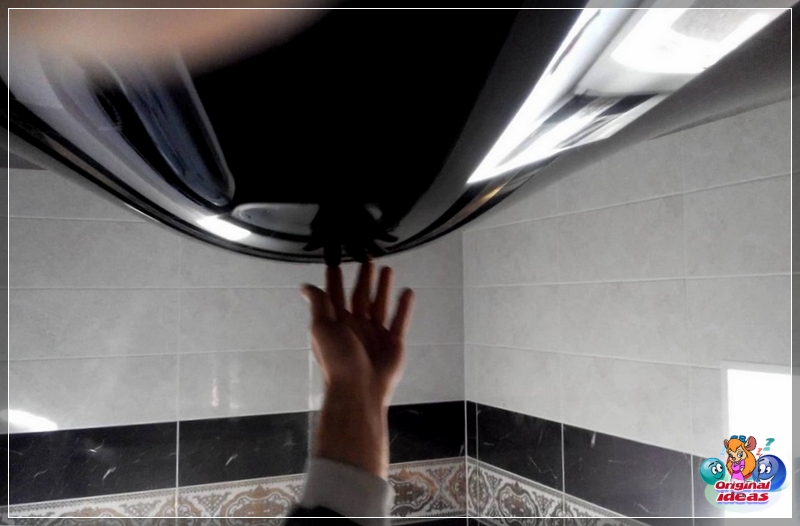
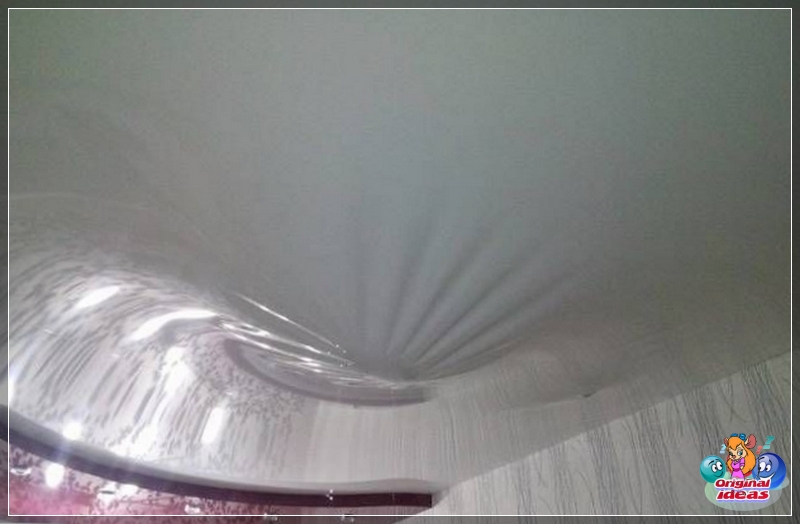

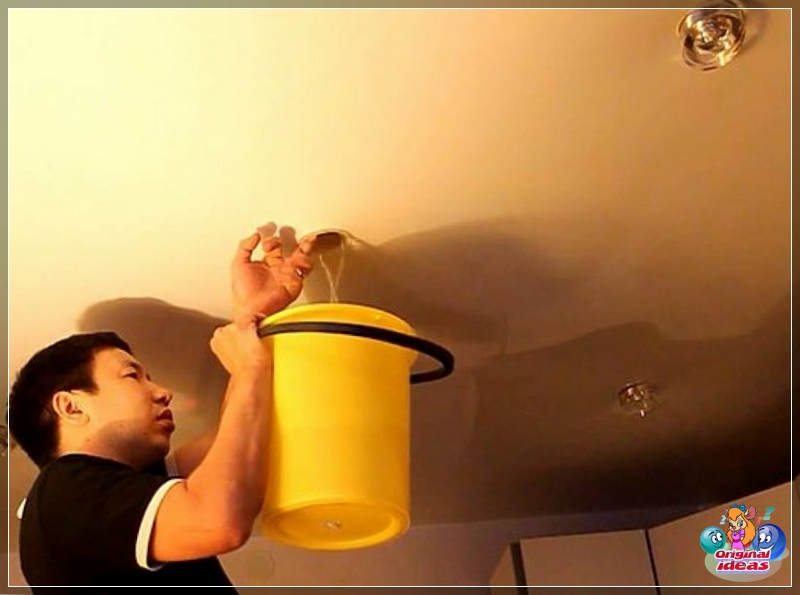
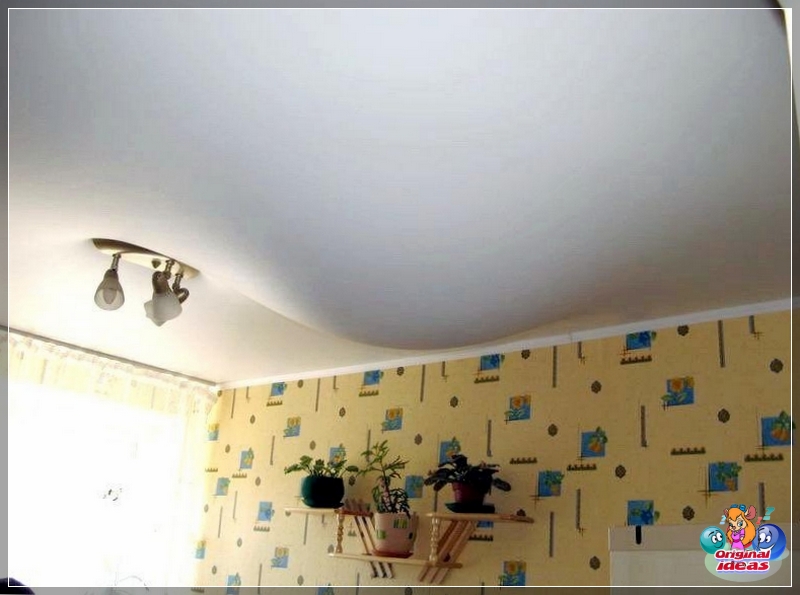
Before draining the water, you need to disassemble the lamp and carefully pull down the mounting ring to create a kind of funnel.
The assistant should apply light pressure to the bulge, directing the liquid towards the hole. It is better to remove it in small portions, avoiding spreading over the entire area of the ceiling. Applying strong pressure to the bubble can rupture the film or overflow the edges of a container that is not suitable for large volumes of water.
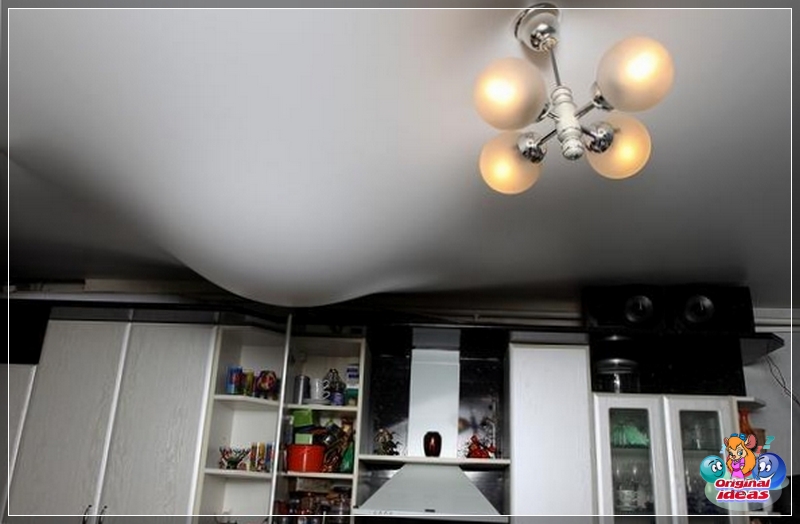
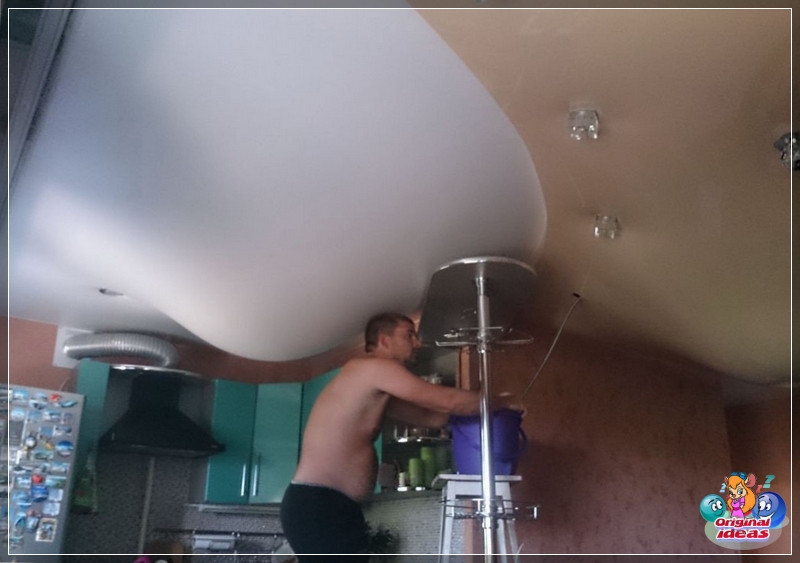
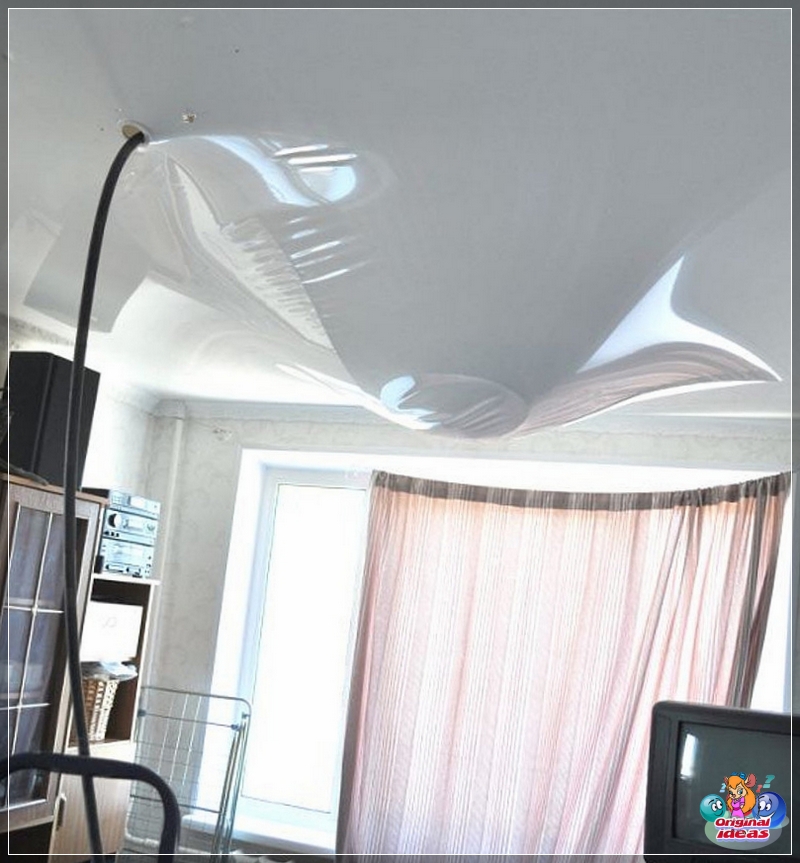
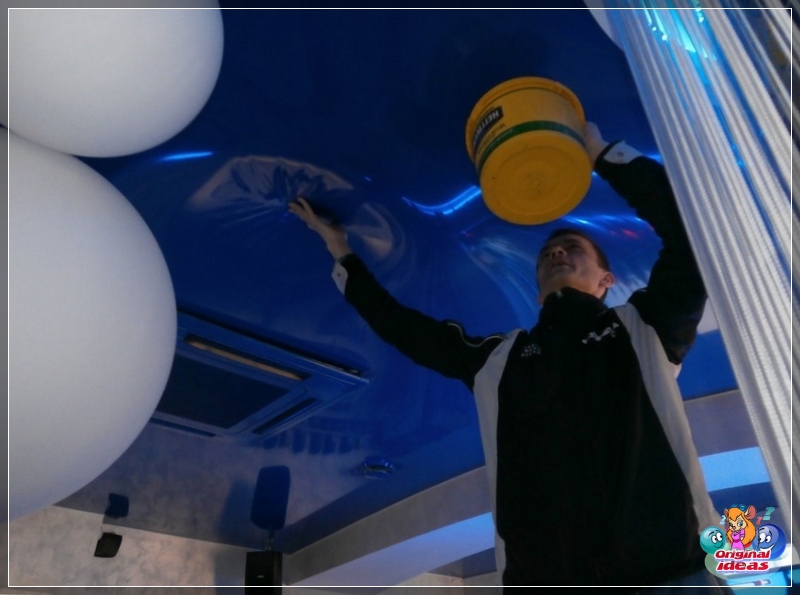
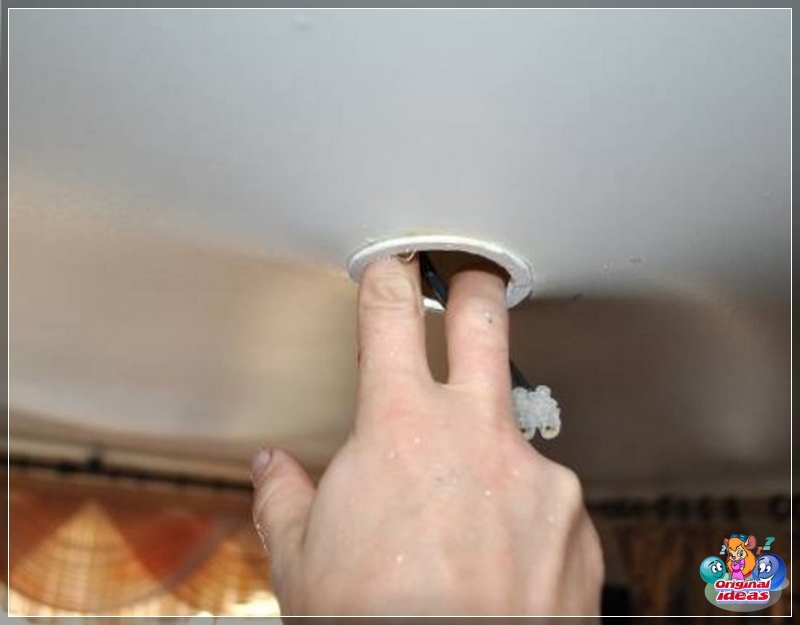
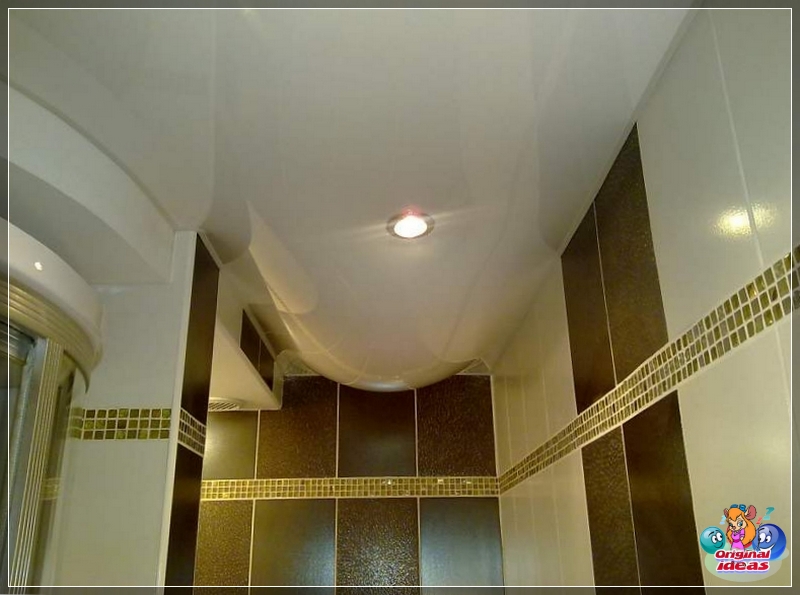
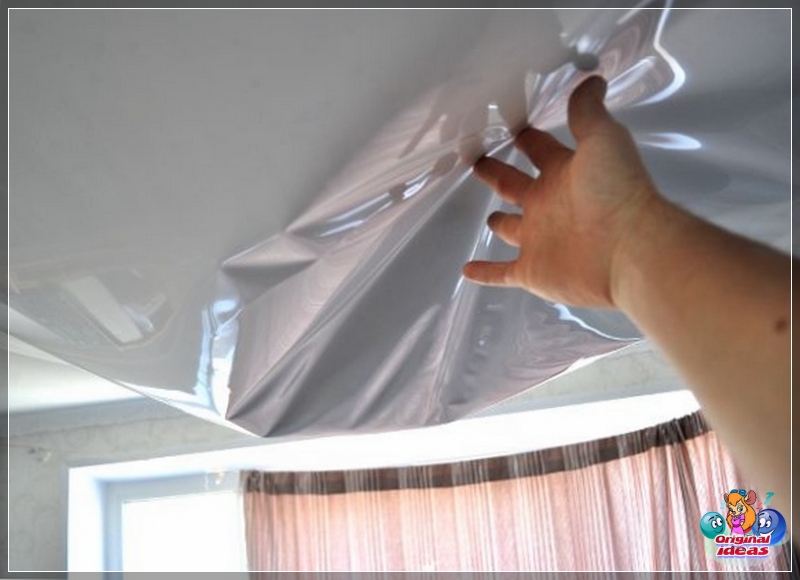
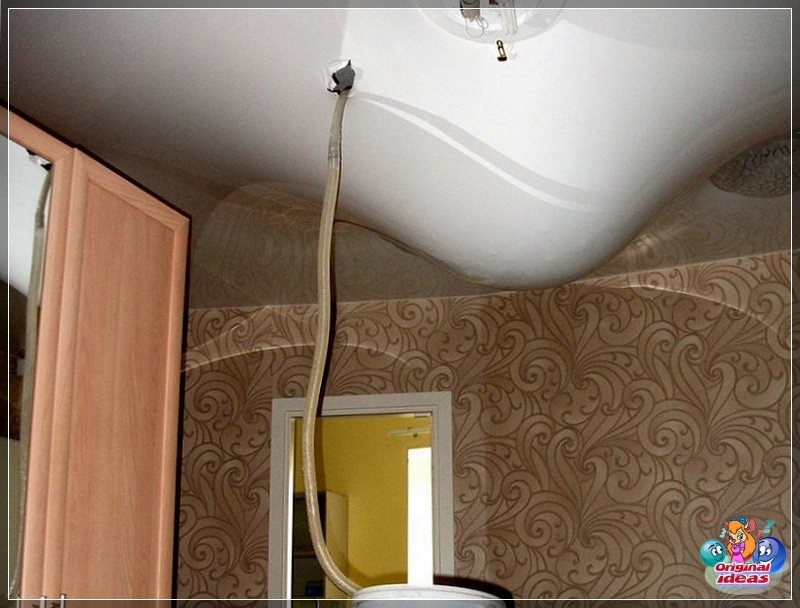
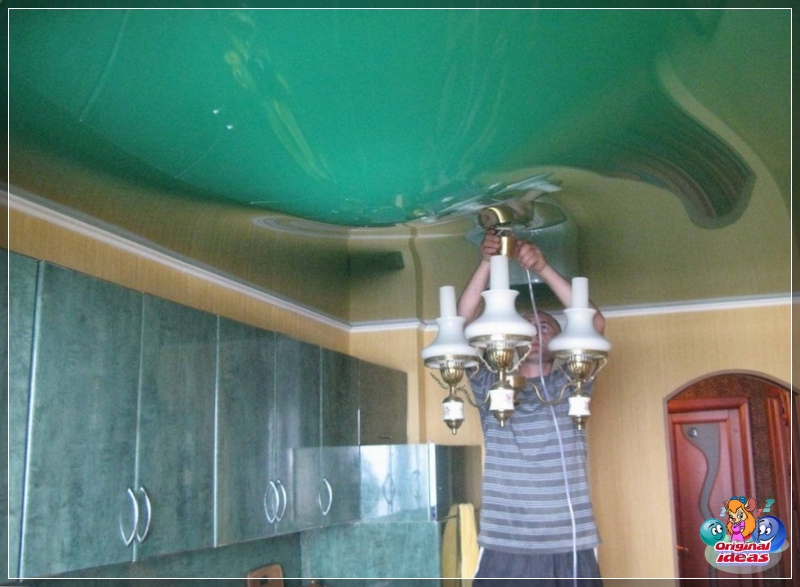
A long hose will help simplify the process. One of its ends is inserted into the hole, the other is placed in the bath. If buckets are filled with a hose, then its lower end is periodically squeezed to change the container.
In rooms where the ceiling is not equipped with lighting points, the corner part of the structure closest to the bulge is disassembled, dismantling the plinth section, and a fragment of the film is freed from the profile. Dismantling the ceiling without the proper tools can damage the film that cannot be repaired. For those who do not know how to drain the water from the stretch ceiling, the video will tell you what tools are used to extract the canvas from the profile. It is worth saying that the dismantling of a part of the canvas can be carried out without heating it. Special paddles allow you to pull out the film fixed in the baguette in several movements.
The free corner of the canvas is pulled down, holding a bucket under a kind of gutter. Assistant mops, spatula, hands the stream of water to the corner. As in the previous method, the procedure must be carried out carefully, avoiding pouring out a large volume of liquid.
It is desirable that the water through the disassembled section of the ceiling be drained by a specialist who distinguishes the glazing bead fastening from the harpoon, who has the appropriate set of tools. You can carry out the procedure yourself only as a last resort, the more a non-professional can make serious mistakes.
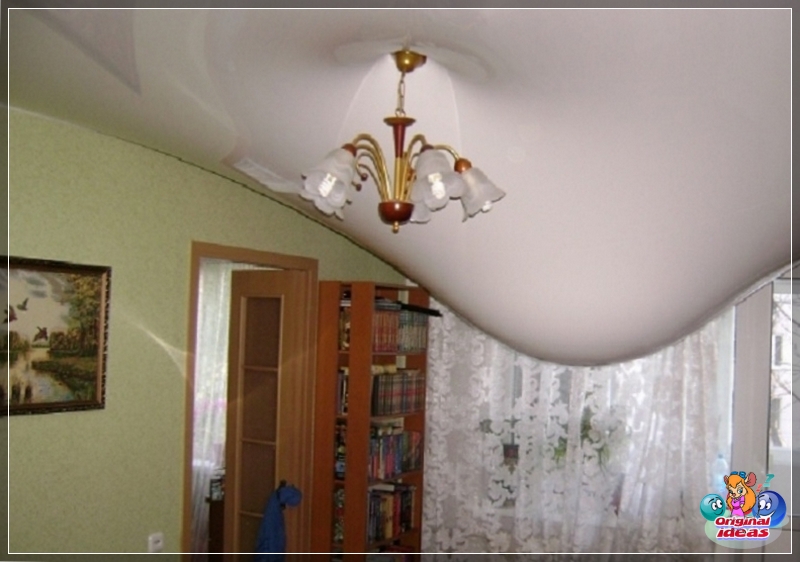
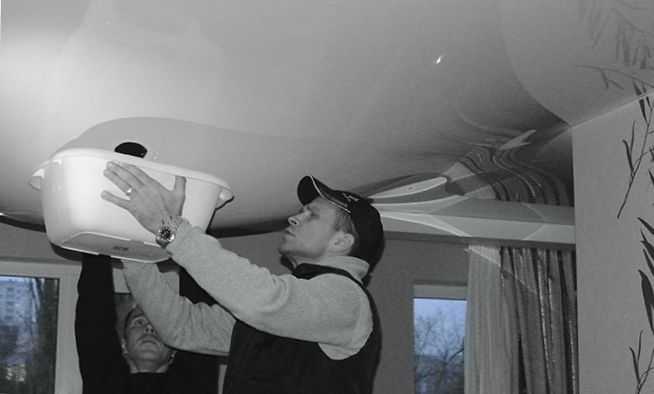
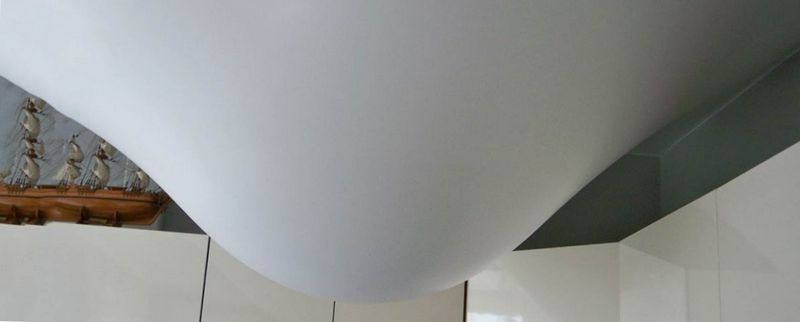
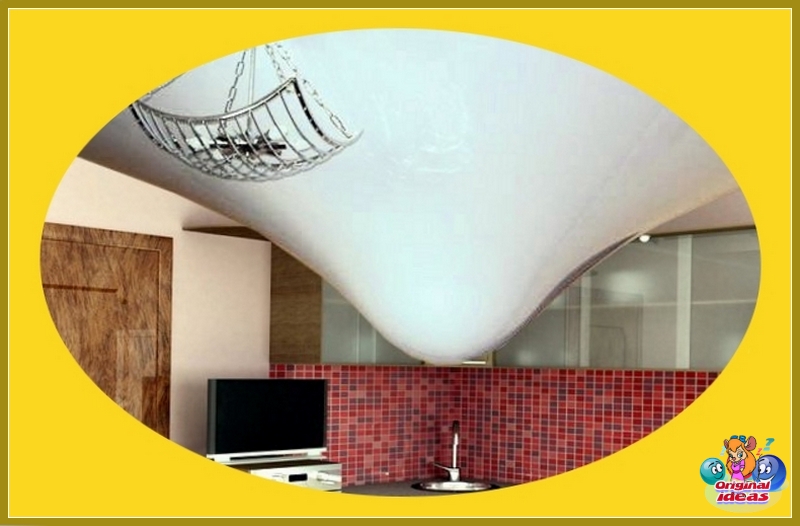
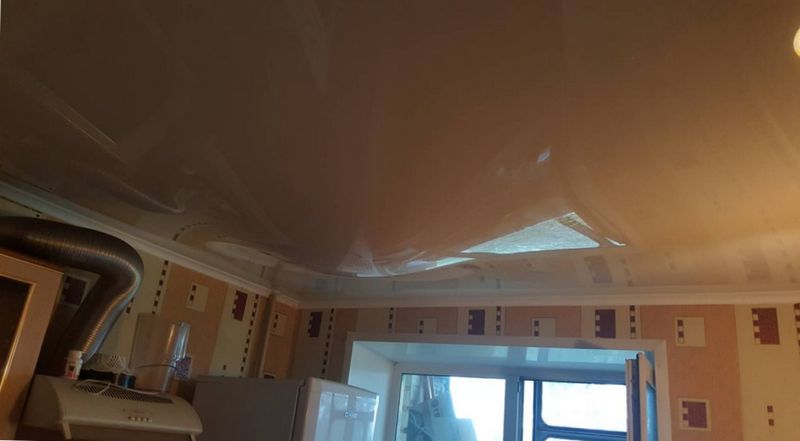
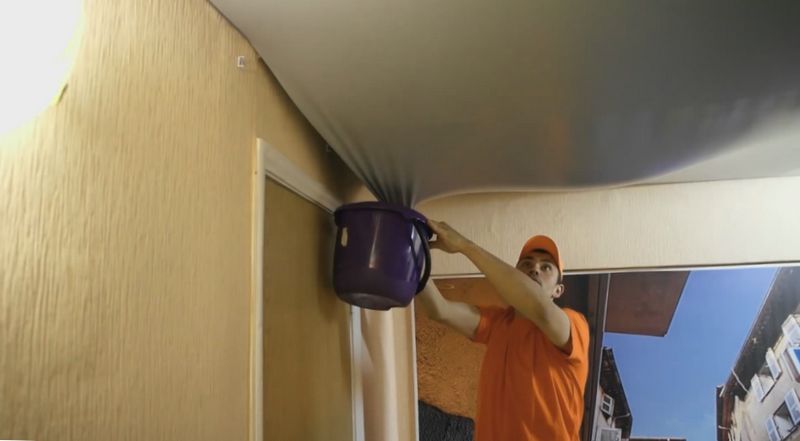
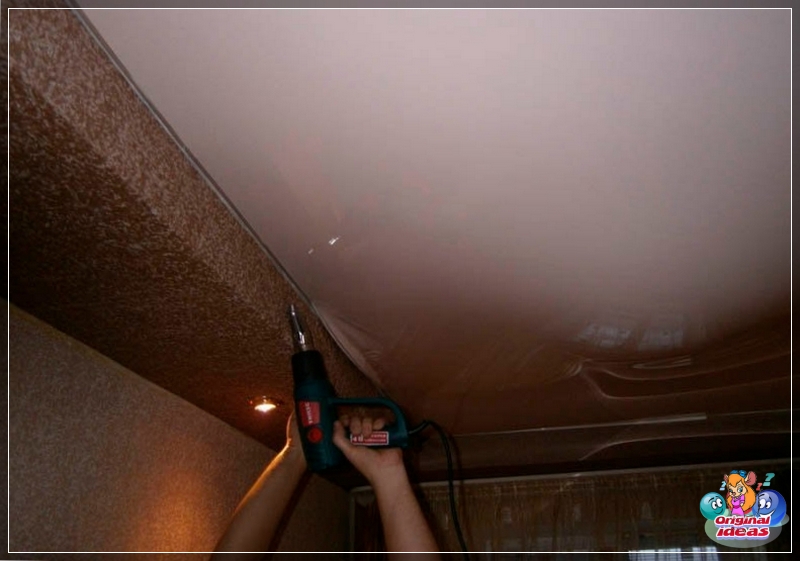
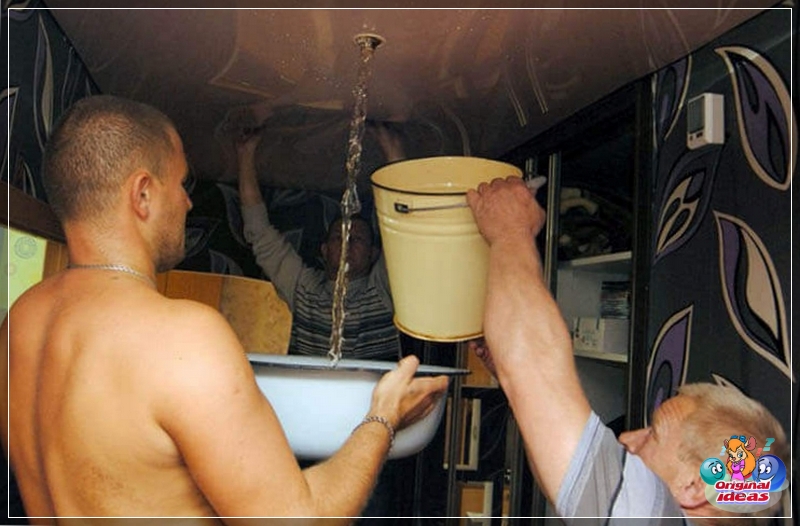
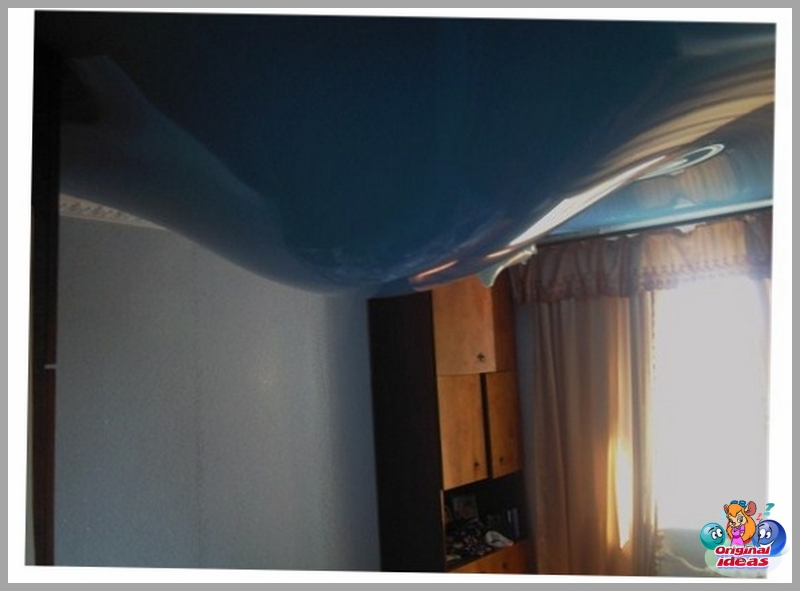
What mistakes can not be made
The first thought that comes to mind to the owner of a stretch ceiling when a water bubble appears is to pierce the canvas. It may seem that the water will gradually drain through the puncture into the substituted container, and the film will return to its previous shape. Such an undertaking should be abandoned, because.To. if implemented, the ceiling will be hopelessly damaged. A punctured hole will turn a mass of water into a huge hole that cannot be patched up.
If the neighbors flooded the stretch ceiling from above, how to drain the water faster? Some of its owners ask such a question and rush to get the job done sooner without inviting an assistant. The result can be damage to the canvas, and flooding of housing at a level below. They endanger their health when they decide with their own hands to cope with flooding the ceiling with hot water or coolant from the heating system. In such cases, it is necessary to call a specialist, all the more, the tension cloth is no longer suitable for subsequent operation.
If you distribute water over the entire plane of the canvas, then it will be impossible to completely remove it.
Mold and unpleasant odor will appear between the stretch and draft ceilings. The risk of a short circuit will increase if the ceiling is not dried after draining. Drying time must be at least 1 week. Only after that they return to their place and connect the lamps to the network. It is inadmissible to operate the tensioning system after it is flooded with a large volume of water without revision and repair of the base. The ceiling must be dismantled, the rough surfaces must be thoroughly dried and treated with antifungal agents.
